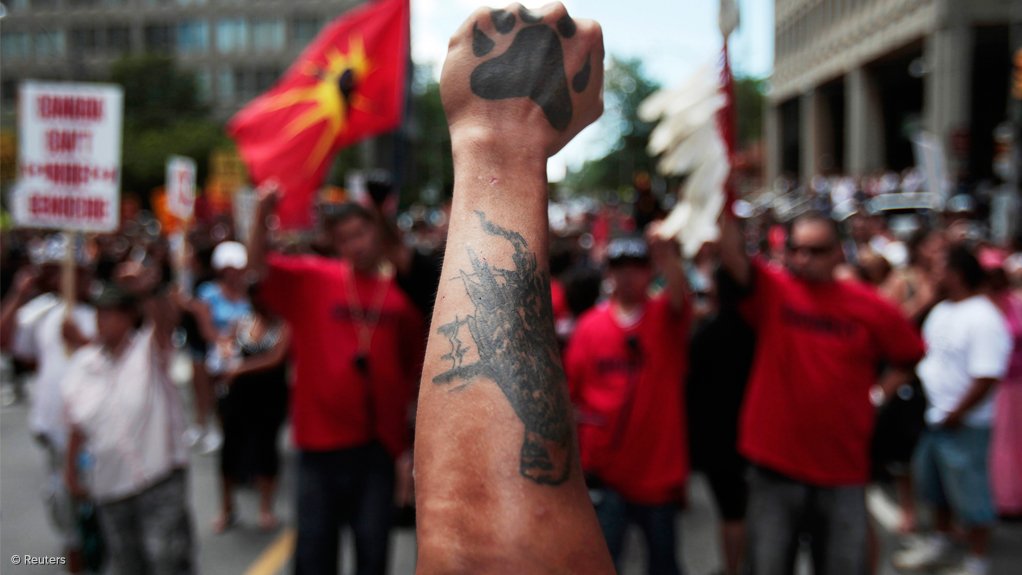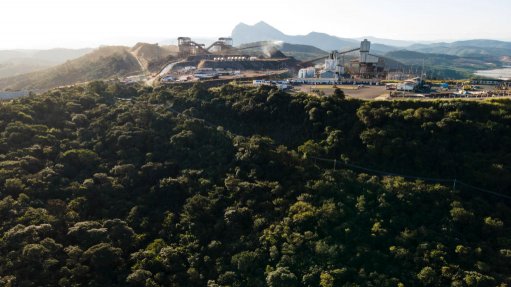Seminal court ruling may affect future of First Nation engagement
TORONTO (miningweekly.com) – The wheels of justice are known for moving slowly. For the Tsilhqot’in Nation they started to grind in 1989, before a ruling by Canada’s Supreme Court finally stopped them on June 26.
Delivering a unanimous verdict, the court recognised a claim brought by chief Roger William asserting Tsilhqot’in title to over 1 700 km2 of land in central British Columbia. The ruling establishes several important tests and, for the first time in Canadian legal history, also acknowledges aboriginal title can lie beyond reservation lands or specific sites.
Title recognises the right to possess the land; the right of occupancy, the right to use and manage the land, the right to determine land use and the right to economic benefits from the land.
Unless a project is deemed to be in the greater public good, consent will be required for all operations or developments on aboriginal title land, including exploration and mining projects.
SCOPE AND SCALE
There is a chance that other aboriginal communities not subject to a treaty agreement might consider making similar title claims. In British Columbia, 59 First Nations are in treaty negotiations under the umbrella of the British Columbia Treaty Commission, while other First Nation communities are engaged in talks elsewhere across Canada.
“The ruling is not just important in British Columbia, but also in Quebec and the maritime provinces, such as New Brunswick and Nova Scotia. In addition, it could be important for Labrador as a portion of that territory is not covered by treaty agreement,” Norton Rose Fulbright partner Pierre-Christian Labeau told Mining Weekly Online. Labeau is a specialist in Canadian aboriginal law.
“However, this case has no legal implication for other parts of Canada with historic treaties, although First Nations which are signatories of those treaties may feel that this decision confirms they should have a greater input in the management of their traditional lands.
“From a political standpoint, it might be a way for them to say that historical treaties should be revised or modified, taking into account this new decision from the Supreme Court,” he explained.
TERMS AND CONDITIONS
For an aboriginal community to gain title, the Supreme Court has set out clear criteria. “Essentially, there are three principles a First Nation will need to prove. Firstly, that there is the sufficient use or sufficient occupation of the land in question,” Fraser Institute Centre for Aboriginal Policy Studies associate director Ravina Bains told Mining Weekly Online.
“The second test is to prove some formal continuity of occupation of the land,” she said, noting that historical evidence is needed to show present occupation in the land, for example, that the aboriginal community was still fishing, harvesting or hunting on.
“[Finally] proof is needed that you have the intention and capacity to control the land in question,” Bains added. “And this doesn’t mean others can’t live on that land or haven’t lived on that land, but here you must demonstrate that they required your consent to live there.”
If awarded, title will be held collectively in the community’s name and governments, provincial or federal, will have to seek “consent of the title-holding aboriginal group [for] developments on the land,” the Supreme Court ruled.
The court stressed that consultation and consent were clearly a Crown remit. “But there have been previous Supreme Court judgments that have said the same thing and the duty to consult was still often offloaded onto industry members or project proponents,” Bains said.
“It will be interesting to see whether different levels of government take this as a wake-up call either to develop stringent duty-to-consult policies, with some type of framework to provide the parameters on what needs to be done, or whether they continue to offload this duty onto industry members,” she added.
To infringe aboriginal title, government must show that it has met its consultation obligations, continues to meet its fiduciary duty to the aboriginal group and has proven the project has a “compelling and substantial public purpose”, according to the ruling.
Bains pointed out that only the Crown could demonstrate whether a project or operation was in the greater public good, stating that to do so, governments needed to step up to the plate and define some of the areas where there was still some uncertainty and ambiguity.
ALTERNATIVE ACTION
Exploration or mining companies across Canada might want to set legal issues aside and seek consent from aboriginal communities from the outset.
“A company might say: ‘We’d like to make a deal with you. We feel this project could have important and significant benefits for your communities',” Labeau said, adding that with this in mind, the First Nations may be willing to reach an agreement.
“With the necessary legal advice, it will be up to mining companies to decide whether they start working in the context of consent or proceed as before,” he noted.
Another issue for exploration and mining companies may stem from First Nation disagreements with the Crown and not the sector.
“Mining companies might find themselves in a situation where the First Nation is not against a mining project but is keen to negotiate [and secure] more power over the management of its traditional lands, especially with the provincial government,” Labeau said.
He explained that, in this instance, mining companies might find themselves in the middle of the fight, even if their project was considered a good opportunity for local communities.
“Overall, it will depend on every specific situation, the leadership of the First Nations, the impact of a project on their traditional lands versus the benefits on the community, how they see their case and whether they want to go to court. And just because one nation has been able to obtain title recognition doesn’t mean the others will be as successful or will have the same success as the Tsilhqot'in,” Labeau stated.
Only time will tell which direction aboriginal communities take. But in no uncertain terms, mining companies that seek genuine partnerships with the First Nations will adapt accordingly, seek guidance and take the necessary steps to deepen their rapport.
Comments
Press Office
Announcements
What's On
Subscribe to improve your user experience...
Option 1 (equivalent of R125 a month):
Receive a weekly copy of Creamer Media's Engineering News & Mining Weekly magazine
(print copy for those in South Africa and e-magazine for those outside of South Africa)
Receive daily email newsletters
Access to full search results
Access archive of magazine back copies
Access to Projects in Progress
Access to ONE Research Report of your choice in PDF format
Option 2 (equivalent of R375 a month):
All benefits from Option 1
PLUS
Access to Creamer Media's Research Channel Africa for ALL Research Reports, in PDF format, on various industrial and mining sectors
including Electricity; Water; Energy Transition; Hydrogen; Roads, Rail and Ports; Coal; Gold; Platinum; Battery Metals; etc.
Already a subscriber?
Forgotten your password?
Receive weekly copy of Creamer Media's Engineering News & Mining Weekly magazine (print copy for those in South Africa and e-magazine for those outside of South Africa)
➕
Recieve daily email newsletters
➕
Access to full search results
➕
Access archive of magazine back copies
➕
Access to Projects in Progress
➕
Access to ONE Research Report of your choice in PDF format
RESEARCH CHANNEL AFRICA
R4500 (equivalent of R375 a month)
SUBSCRIBEAll benefits from Option 1
➕
Access to Creamer Media's Research Channel Africa for ALL Research Reports on various industrial and mining sectors, in PDF format, including on:
Electricity
➕
Water
➕
Energy Transition
➕
Hydrogen
➕
Roads, Rail and Ports
➕
Coal
➕
Gold
➕
Platinum
➕
Battery Metals
➕
etc.
Receive all benefits from Option 1 or Option 2 delivered to numerous people at your company
➕
Multiple User names and Passwords for simultaneous log-ins
➕
Intranet integration access to all in your organisation




















